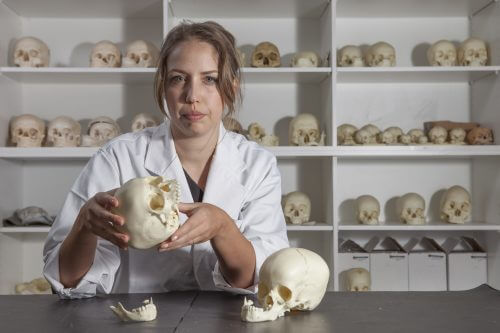Researchers from the Australian National University (ANU) have uncovered a jump in population size that occurred around 4,000 years ago in Southeast Asia. The explosion has been speculated in the past but not verified until now

Researchers from the Australian National University (ANU) have uncovered a jump in population size that occurred around 4,000 years ago in Southeast Asia. The explosion has been speculated in the past but not verified until now. The researchers used a new measurement method to identify human population growth events in prehistoric times. The researchers examined the proportion of children among human fossils from those periods. They were able to prove a significant rapid increase of populations in the areas that are today Thailand, China and Vietnam during the Neolithic period, and a further increase after that during the Iron Age.
Claire McFadden, a PhD student in the Department of Archeology and Anthropology at the Australian National University, said the population trend was consistent across samples taken from 15 sites.
"We saw a huge increase in population associated with the agricultural revolution," McFadden said. "Until about 4,000 years ago, the inhabitants of these areas were hunter-gatherers, and then agriculture appeared. The agricultural revolution has been widely studied around the world and we consistently see significant population growth as a result."
The reason these population changes have never been measured before is that the tools used to measure prehistoric populations were all designed for Europe and the Americas, where the archaeological conditions are different from those of Asia. McFadden said the difference stems from the representation of children in the fossil record.
"In the excavations where skeletons were discovered in Europe and America, we often see the complete absence of babies and children. Here they are very well represented," she said. "The preservation is not good - small bones are not well preserved, children were also often buried in a different cemetery than the adults."
McFadden said her new method for determining the rate of natural population growth takes into account the proportion of infants and children compared to the total population. In this way, the researchers were able to bring the population growth data in line with other archaeological evidence in the area, which indicated a rapid increase.
"In Southeast Asia and the Pacific, we actually have pretty good preservation of bones from children," she said. "The skeletal evidence was there, we saw populations with huge numbers of babies and children compared to adult populations, suggesting that the population was growing at the time, but the existing tools didn't detect the growth."
"The trends found using the new method match perfectly with what researchers expect to see as a result of the transition to agriculture."
https://www.sciencedaily.com/releases/2018/09/180920102132.htm
to the announcement of the university
for the scientific article
More of the topic in Hayadan:
